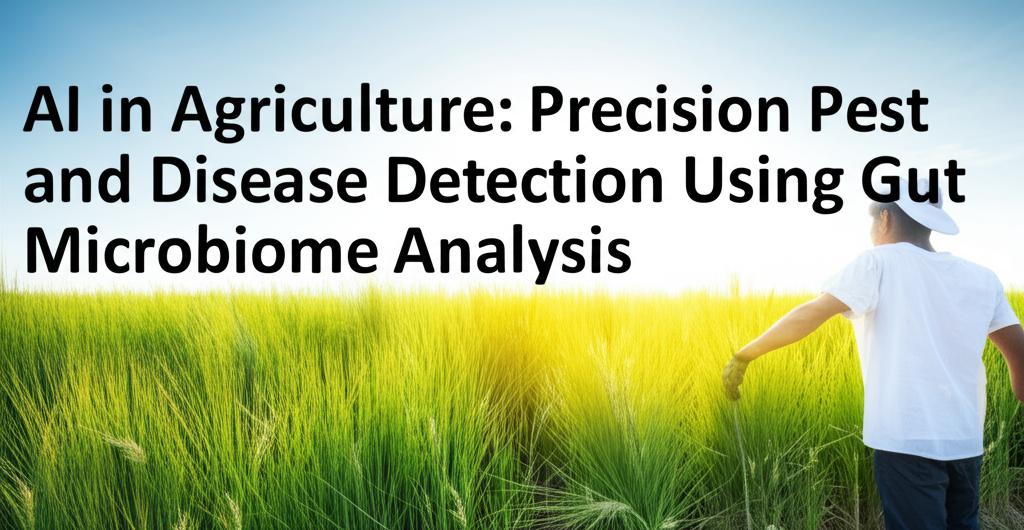The agricultural sector is increasingly turning to artificial intelligence (AI) to revolutionize how we detect and manage crop pests and diseases. A particularly promising frontier is the use of gut microbiome analysis in insects and other agricultural pests, powered by AI, to develop highly targeted and sustainable control methods.
Traditionally, identifying and combating plant diseases and pests has been a labor-intensive and time-consuming process, often relying on visual inspection and broad-spectrum chemical treatments. However, the advent of AI, particularly machine learning (ML) and deep learning (DL) algorithms, is transforming this landscape. These technologies excel at analyzing vast and complex datasets, making them ideal for deciphering the intricate information held within an organism's microbiome.
The gut microbiome, the community of microorganisms residing in an animal's digestive tract, plays a critical role in its health, development, and even its susceptibility to pathogens and ability to digest food. By analyzing changes in the gut microbiome composition of agricultural pests, researchers can gain valuable insights. For instance, specific microbial signatures might indicate an early-stage infection or the pest's resistance to certain control agents.
AI algorithms are crucial for this process. High-throughput sequencing technologies generate enormous amounts of data about the microbial DNA present in a gut sample. AI models can then process this metagenomic data to:
- Identify microbial species and their relative abundance: This helps establish a baseline "healthy" gut microbiome for a particular pest and detect deviations that could signal disease or stress.
- Discover biomarkers: AI can pinpoint specific microbes or patterns of microbial communities that are reliably associated with certain diseases, pest vulnerabilities, or even their food-digesting capabilities. This can lead to early detection and more precise interventions.
- Predict pest behavior and susceptibility: By correlating microbiome data with other factors like environmental conditions (temperature, humidity) and pest physiology, AI can help predict how pest populations might develop, their likelihood of succumbing to disease, or their resistance to pesticides.
- Develop novel control strategies: Understanding the gut microbiome can open doors to new pest management approaches. This could involve developing probiotics for pests that disrupt their ability to digest crops or make them more susceptible to natural enemies, or identifying microbial weaknesses that can be exploited with targeted therapies.
Recent research highlights the potential of this approach. Studies are underway to use ML models to predict the microbiome composition in agricultural pests like fruit flies. By understanding the dynamics of their gut bacteria, scientists aim to develop more efficient and sustainable pest control methods that could, for example, target the pest's food-digesting capacity or its resistance to specific viruses or bacteria.
Furthermore, AI is being integrated with other advanced technologies like IoT sensors for real-time monitoring of plant and soil health. This allows for the collection of even more data points that, when combined with microbiome analysis, can provide a comprehensive picture of the agricultural ecosystem. Cloud-based platforms are also being developed to manage and analyze this data, making sophisticated AI-driven insights accessible to farmers.
While the application of AI to gut microbiome analysis for pest and disease detection is still an evolving field, it holds immense promise for the future of precision agriculture. It offers a path towards more targeted, effective, and environmentally friendly strategies for protecting crops and ensuring global food security. By understanding the microscopic world within pests, we can develop smarter and more sustainable ways to manage them.

